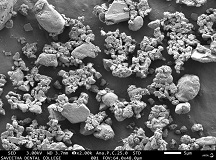Publication Policies
Publication Ethics and Publication Malpractice Statement
For all parties involved in the act of publishing (the author, the journal editor(s), the peer reviewer, and the publisher) it is necessary to agree upon standards of expected ethical behaviour. The ethics statements for our journal are based on the Committee on Publication Ethics (COPE) Best Practice Guidelines for Journal Editors.
-
Editors-in-Chief
Fair play
Submitted manuscripts are evaluated for their intellectual content without regard to race, gender, sexual orientation, religious belief, ethnic origin, citizenship, or political philosophy of the authors.
Confidentiality
The Editor-in-Chief and any editorial staff must not disclose any information about a submitted manuscript to anyone other than the corresponding author, reviewers, potential reviewers, other editorial advisers, and the publisher, as appropriate.
Disclosure and conflicts of interest
Unpublished materials disclosed in a submitted manuscript must not be used in an editor’s research without the explicit written consent of the author(s).
Publication decisions
The handling Editor-in-Chief of the journal is responsible for deciding which of the submitted articles should be published. The Editor-in-Chief may be guided by the policies of the journal's Editorial Board and constrained by such legal requirements as shall then be in force regarding libel, copyright infringement and plagiarism. The Editor-in-Chief may confer with other editors or reviewers in making this decision.
-
Peer reviewers
Contribution to editorial decisions
Peer review assists the Editor-in-Chief in making editorial decisions and, through the editorial communication with the author, may also assist the author in improving the manuscript.
Promptness
Any invited referee who feels unqualified to review the research reported in a manuscript or knows that its timely review will be impossible should immediately notify the Editor-in-Chief so that alternative reviewers can be contacted.
Confidentiality
Any manuscripts received for review must be treated as confidential documents. They must not be shown to or discussed with others except if authorized by the Editor-in-Chief.
Standards of objectivity
Reviews should be conducted objectively. Personal criticism of the author is unacceptable. Referees should express their views clearly with appropriate supporting arguments.
Acknowledgement of sources
Reviewers should identify relevant published work that has not been cited by the authors. Any statement that an observation, derivation, or argument had been previously reported should be accompanied by the relevant citation. A reviewer should also call to the Editor's attention any substantial similarity or overlap between the manuscript under consideration and any other published data of which they have personal knowledge.
Disclosure and conflict of interest
Privileged information or ideas obtained through peer review must be kept confidential and not used for personal advantage. Reviewers should not consider evaluating manuscripts in which they have conflicts of interest resulting from competitive, collaborative, or other relationships or connections with any of the authors, companies, or institutions connected to the submission.
-
Authors
Reporting standards
Authors reporting results of original research should present an accurate account of the work performed as well as an objective discussion of its significance. Underlying data should be represented accurately in the manuscript. A paper should contain sufficient detail and references to permit others to replicate the work. Fraudulent or knowingly inaccurate statements constitute unethical behaviour and are unacceptable.
Originality and Plagiarism
The authors should ensure that they have written entirely original works, and if the authors have used the work and/or words of others that this has been appropriately cited or quoted.
Multiple, redundant or concurrent publication
An author should not in general publish manuscripts describing essentially the same research in more than one journal or primary publication. Parallel submission of the same manuscript to more than one journal constitutes unethical publishing behavior and is unacceptable.
Authorship of a manuscript
Authorship should be limited to those who have made a significant contribution to the conception, design, execution, or interpretation of the reported study. All those who have made significant contributions should be listed as coauthors. Where there are others who have participated in certain substantive aspects of the research project, they should be named in an Acknowledgement section. The corresponding author should ensure that all appropriate co-authors (according to the above definition) and no inappropriate co-authors are included in the author list of the manuscript, and that all co-authors have seen and approved the final version of the paper and have agreed to its submission for publication.
Hazards and human or animal subjects
If the work involves chemicals, procedures or equipment that have any unusual hazards inherent in their use, the authors must clearly identify these in the manuscript.
Disclosure and conflicts of interest
All authors should disclose in their manuscript any financial or other substantive conflict of interest that might be construed to influence the results or their interpretation in the manuscript. All sources of financial support for the project should be disclosed.
Fundamental errors in published works
When an author discovers a significant error or inaccuracy in his/her own published work, it is the author's obligation to promptly notify the journal's Editor-in-Chief or publisher and cooperate with them to either retract the paper or to publish an appropriate erratum.
-
Publisher's confirmation
In cases of alleged or proven scientific misconduct, fraudulent publication or plagiarism the publisher, in close collaboration with the Editors-in-Chief, will take all appropriate measures to clarify the situation and to amend the article in question. This includes the prompt publication of an erratum or, in the most severe cases, the complete retraction of the affected work.
The Publisher and the Journal do not discriminate on the basis of age, color, religion, creed, disability, marital status, veteran status, national origin, race, gender, genetic predisposition or carrier status, or sexual orientation in its publishing programs, services and activities.
Use of Generative AI Tools
Texila International Journal acknowledges the evolving role of Generative AI (GenAI) tools, such as ChatGPT and other similar technologies, in supporting authors, reviewers, and editors throughout the publication process. These tools may assist with language refinement, content organization, and idea generation. However, their use must always adhere to ethical standards, maintain academic integrity, and ensure that all content—both text and visual elements—is original, accurate, and prepared under human oversight.
-
Authors’ Responsibilities
- Authors must disclose any use of GenAI tools in manuscript preparation, including text generation, summarization, translation, or language editing.
- GenAI tools cannot be listed as authors; all authors must meet standard authorship criteria.
- Authors remain fully responsible for the accuracy, originality, and integrity of all content generated or assisted by GenAI.
- Figures, graphical abstracts, and illustrations must be original and prepared by human authors; AI-generated images or graphics are not permitted. Human verification and intervention are mandatory.
- Use of GenAI to fabricate, manipulate, or misrepresent data or findings is strictly prohibited.
-
Reviewers’ Responsibilities
- Manuscripts must be treated as strictly confidential. Reviewers must not upload the manuscript or any part of it into AI tools, as doing so may breach confidentiality, proprietary rights, or data privacy regulations.
- This confidentiality requirement also applies to peer review reports; reviewers should not use AI to edit or enhance their reports, even for language improvement.
- Peer review requires human critical thinking and independent judgment. Generative AI cannot replace scientific evaluation, and reviewers are fully accountable for the content of their reports.
-
Editors’ Responsibilities
- A submitted manuscript must always be treated as strictly confidential. Editors must not upload the manuscript—or any part of it—into a generative AI tool, as this may violate authors’ confidentiality, proprietary rights, or data privacy regulations.
- This confidentiality extends to all communications regarding the manuscript, including decision letters and notifications, which may contain sensitive information about the manuscript or authors. Editors should not use AI tools for drafting or editing these communications, even for language improvement.
- Managing the editorial evaluation of a manuscript requires responsibilities that can only be fulfilled by humans. Generative AI or AI-assisted technologies must not be used to assess, evaluate, or make decisions about a manuscript, as these tools cannot provide the critical thinking and independent judgment required and may produce incomplete, biased, or inaccurate conclusions.
- Editors remain fully responsible and accountable for the editorial process, the final publication decision, and all communications to authors.
-
Transparency and Disclosure
- All AI-assisted activity must be disclosed in the manuscript (methods, acknowledgments, or a separate declaration).
- Non-disclosure or misuse may result in rejection, retraction, or other corrective measures.
-
Ethical Compliance
- All GenAI use must comply with ethical standards, copyright regulations, and research integrity policies.
- Human oversight is required for all text, figures, graphical abstracts, and visual content. Originality, accountability, and ethical conduct remain the responsibility of authors, reviewers, and editors.
By participating in the publication process—whether as an author, reviewer, or editor—stakeholders agree to comply with this policy. Non-compliance may lead to rejection, retraction, or other measures deemed appropriate by the editorial team.
LICENCES, COPYRIGHT & PERMISSIONS
The acceptance of the author’s licence, copyrights and permission is mandatory to publish an article in TIJ. The journal permits authors to retain full copyright of their articles without any restrictions. Authors also retain publishing rights without limitations.
-
Open Access Statement
The Texila International Journal (TIJ) is committed to real and immediate open access for academic work. Texila International Journal publishes original, review, and case report articles on a range of multidisciplinary topics, including Public Health, Medicine, Nursing, Management, and Academic Research. Our content is available under a Creative Commons Attribution 4.0 international license (CC BY 4.0), promoting knowledge exchange on a global scale while preserving copyright. This means all content is accessible for free, allowing users to read, download, copy, distribute, remix, or transform articles for lawful purposes without seeking prior permission from the date of publication. Proper acknowledgment of the authorship is required, with explicit mention of the author or authors and the journal. TIJ does not, therefore, operate either a Gold or Green model of open access, but is free to all at any time and in perpetuity.

This work is licensed under a Creative Commons Attribution 4.0 International License.Copyright of the layout and design of TIJ articles and reviews remains with the TIJ and cannot be used in other publications. The TIJ is a member of PILA (Publishers International Linking Association) and submits all articles and reviews, including all works that these cite, to CrossRef for cross-referral. To find TIJ articles and reviews via their DOI numbers, use the URL http://dx.doi.org/[DOI number]
-
Originality and Plagiarism
The TIJ will judge any case of plagiarism on its own merits. If plagiarism is detected, either by the editorial staff, editors and peer reviewers/at any stage before publication of manuscript/before or after acceptance, we will intimate the author(s), asking them to either rewrite the text or quote the text exactly and to cite the original source. If the plagiarism is extensive - that is, if at least 15% of the original submission is plagiarized - the article may be rejected and the author(s) will be notified.
"Plagiarism" Can occur in two forms
- Author intentionally copy someone else work and claim it as their own research work.
- Author copy their own previously published material either in full or in part, without providing appropriate reference - also called as "self-plagiarism" or "duplicate publication"
COPE - Committee on Publication Ethics.
ICMJE - International Committee of Medical Journal Editors.
STM - International Association of Scientific, Technical & Medical Publishers..
-
Assurances
In the licence to publish, the author provides the assurances that we need to publish the material, including assurances that the work is original to the author, that the work has not been published already and that permissions have been obtained if previously published material has been included.
If the manuscript includes material that belongs to someone else (for example, a figure or diagram), we require the author to obtain all permissions that may be needed from third parties. If you wish to reuse material that was not published originally by the TIJ please see Re-use permission requests.
-
Rights retained by authors
When the author accepts the exclusive licence to publish for a journal article, they retain certain rights that may be exercised without reference to the TIJ.
Reproduce/republish portions of the article (including the abstract).
Photocopy the article and distribute such photocopies and distribute copies of the PDF of the article for personal or professional use only (the TIJ makes this PDF available to the corresponding author of the article upon publication. Any such copies should not be offered for sale. Persons who receive or access the PDF mentioned above must be notified that this may not be made available further or distributed.).
Adapt the article and reproduce adaptations of the article for any purpose other than the commercial exploitation of a work similar to the original.
Reproduce, perform, transmit and otherwise communicate the article to the publicein spoken presentations (including those that are accompanied by visual material such as slides, overheads and computer projections).
The author(s) must submit a written request to the TIJ for any use other than those specified above.
All cases of republication/reproduction must be accompanied by an acknowledgement of first publication of the work by the TIJ, the wording of which depends on the journal in which the article was published originally. The acknowledgement should also include a hyperlink to the article on the TIJ website.
The author also has some rights concerning the deposition of the whole article.
-
Re-use permission requests
The TIJ have all applicable copyright, database protection, and other rights. Therefore, for any publication, whether printed or electronic, prior permission is to be obtained to use the material for which the author(s) does not already own the copyright. This material may be, for example, a figure, diagram, table, photo, or some other image.
-
Article Sharing
Reuse of material that was published originally by the TIJ must be accompanied by the appropriate acknowledgement of the publication. Authors contributing to our publications (journal articles, books, or book chapters) do not need to formally request permission to reproduce material contained in another TIJ publication. However, permission should be requested for the use of a whole article or chapter. For all cases of reproduction, the correct acknowledgement of the reproduced material should be given. The form of the acknowledgement is dependent on the journal in which it was published originally, as detailed in the 'Acknowledgements' section.
We must ensure that the material we publish does not infringe on the copyright of others. We require the author(s) to obtain, at the earliest opportunity, the relevant permissions that might be needed from third parties to include material that belongs to someone else.
Please contact the publisher/copyright owner of the third-party material to check how they wish to receive permission requests. Please plan to submit your request well ahead of the publication of your material.
-
Funding Statement
Details of all funding sources for the work in question should be given in a separate section entitled 'Funding'. This should appear after the 'Acknowledgements' section.
The following rules should be followed:
- The sentence should begin: 'This work was supported by ...'
- The full official funding agency name should be given, i.e. 'Texila American University', not 'TAU'.
- Agencies should be separated by a semi-colon (plus 'and' before the last funding agency).
- Any role a sponsor played should be detailed in the acknowledgements section. For example, if they were involved with the writing, study design, collection, analysis or interpretation of data.
- If funding has been provided for your study a 'Funding:' heading should be added to the end of the abstract listing the companies/institutes who have funded the work, e.g. Funding: ARC.
Conflicts of Interest Policy
TIJ is dedicated to following the highest ethical principles of scholarly publishing and promoting highest standards of integrity and ethical conduct in research and its evaluation. To uphold these principles, it is important to follow the policy for addressing potential conflicts of interest.
A conflict of interest exists when professional judgment concerning validity of research may be influenced by external factors like financial gain, material benefits or personal interests. It may arise for the editors, reviewers or authors of a manuscript submitted for publication to TIJ Journals when external factors may influence the conduct and interpretation of research.
It is important to know about the conflicts of interest of the editors, reviewers and authors in order to make the best decision for handling of the article during editorial and peer review process. It is also important for the readers of the article to know about any conflict of interest.
-
Author's Conflict of Interest
All authors are required to disclose any actual or potential conflict of interest including any financial, personal or other relationships that could inappropriately influence, or be perceived to influence, their work. Authors are required to declare any conflict of interest at the time of manuscript submission. They are again asked to declare any conflict of interest at the time of submitting the Author Agreement Form. This second declaration in the Author Agreement Form takes care of two things: i) if the authors inadvertently did not give the conflict of interest at the time of manuscript submission, they can give it in the agreement, ii) if any conflict of interest develops from the time of manuscript submission to submitting the revised version and final decision, authors can declare this in the agreement and appropriate action can be taken.
The corresponding author is responsible for collecting the list of potential conflicts of interest from each author of the manuscript and includes the list of all potential conflicts in the manuscript before submission for publication.
-
Editor's Conflicts of Interest
Editors of all journal published by TIJ have a duty to maintain the highest possible standards in manuscript evaluation and maintain the integrity of the Journal. Editors are obliged to disclose any and all potential conflicts of interest to TIJ Journals. This disclosure should be made at the time of enrolling as editor, as soon as a conflict of interest develops any time after enrolling as editor and separately for each manuscript sent for editorial review. If a manuscript is submitted for publication by an editor, the name of the handling editor will not be disclosed to either the editor (author of the manuscript) or the co-authors. Only the Editor-in-Chief and the Journal editorial staff will be privy to this information.
If a manuscript is submitted by an author who is at the same institution as one of the editors, the manuscript will be handled by another editor who is not at that institution.
If a manuscript is submitted by an author who is a family member of the editor or personally or professionally related to the editor (e.g. friend, colleague or student) the manuscript will be handled by another editor.
-
Peer reviewer's Conflicts of Interest
All peer reviewers of a manuscript will be required to declare the conflict of interest in the manuscript review form, as the first step of manuscript evaluation process. If a material potential conflict of interest, financial or otherwise exists, the reviewers are requested to excuse themselves from the review process and submit the review form to the Editor-in-Chief, listing the conflict of interest. If the reviewer declares any potential conflict, it does not invalidate the review of the manuscript.
Editorial Policies
This policy describes guidelines in the publication process of our journals. Specifically, TIJ adopts and strive to adhere to the following standards and requirements:
COPE - Committee on Publication Ethics.
ICMJE - International Committee of Medical Journal Editors.
STM - International Association of Scientific, Technical & Medical Publishers..
WAME - World Association of Medical Editors.
-
Authorship
An author is an individual who has significantly contributed to the development of a manuscript. TIJ recommends that authorship be based on the following four criteria:
- Substantial contributions to the conception or design of the work; or the acquisition, analysis, or interpretation of data for the work
- Drafting the work or revising it critically for important intellectual content
- Final approval of the version to be published
- Agreement to be accountable for all aspects of the work in ensuring that questions related to the accuracy or integrity of any part of the work are appropriately investigated and resolved.
-
Acknowledgement
Individuals who participated in the development of a manuscript but do not qualify as an author should be acknowledged. Organizations that provided support in terms of funding and/or other resources should also be acknowledged.
-
Changes in authorship
Whenever there is a need to make changes in the authorship of a manuscript or a published article, the changes will be implemented according to COPE specification. Only corresponding authors can make request for a change in authorship. Request should be made to the editor using the Changes in Authorship Form.
-
Submission of Manuscript
Authors should read the "Steps to Organize the Manuscript" on the Author's Inst page before making a submission. Manuscript should be prepared according to the style and specifications of the journal's policy.
Authors listed on the manuscript should have met the requirements for Authorship specified above. Where possible, specify the contribution of each of the authors.
All authors should approve the final version of the manuscript prior to submission. Once a manuscript is submitted, it is therefore assumed that all authors have read and given their approval for the submission of the manuscript.
Contact information of all authors should be stated on the manuscript. Surname/Other names, affiliation, emails, and phone/fax numbers. Declaration of Conflicts of Interest should be stated in the manuscript.
-
Confidentiality
A submitted manuscript is a confidential material. TIJ will not disclose submitted manuscript to anyone except individuals who partake in the processing and preparation of the manuscript for publication (if accepted). These individuals include editorial staff, corresponding authors, potential reviewers, actual reviewers, and editors. However, in suspected cases of misconduct, a manuscript may be revealed to members of TIJ ethics committee and institutions/organizations that may require it for the resolution of the misconduct. TIJ shall follow the appropriate COPE flowcharts wherever necessary.
-
Peer review
The review process is an important aspect of the publication process of an article. It helps an editor in making decision on an article and also enables the author to improve the manuscript. TIJ operates a double blind review process.
Author(s) identity is removed from the manuscript and shielded from the reviewers during the review process. The reviewer is left with only the manuscript without any information that might enable him/her uncovers the identity of the author(s). Information removed includes the author(s) name, address/affiliation, country, phone/fax and email. Any information in the Acknowledgement and Declaration of Conflict of Interest that may lead to the uncovering of the identity of the author is also removed from the manuscript prior to sending it to reviewers.
Reviewer Guideline
- The peer reviewer is responsible for critically reading and evaluating a manuscript in their specialty field, and then providing honest feedback to authors about their submission.
- Peer Reviewer to discuss the strengths and weaknesses of the article, and provide the inputs to improvements and quality of the work.
- Reviewers are ensuring the protection of individual data and maintain confidentiality.
Reviewing Process
- The manuscript does not cover within the area of your expertise, please notify the editor as soon as possible. Also, you can feel free to recommend alternate reviewer.
- Reviewers are requested to respond to the invitation of review within 2 days of the invitation and to complete the full review within 20 days. (We will provide you a dedicated journal account for review process). If you not able to complete your review within the deadline, please contact the Publishing House/Editor. We will grant extensions to the deadline on an as needed basis. Therefore, if you only need a few more days or week to complete a review please request an extension.
- However, if you are unable to fulfill the review process within the stipulated time (even with an extension), please let us know so that we may find a replacement reviewer and not hold up feedback to the author(s).
Content Quality and Originality
Should ensure the Quality, originality and journal standard of the manuscript content
The most important element of your review is the quality of your comments to the author. Remember, your review not only helps authors realize the potential of a particular manuscript, but also builds their capacity for future work.Organization and Clarity
- Title: Does it clearly describe the article?
- Abstract: Does it reflect the content of the article?
- Introduction: Does it describe what the author hoped to achieve accurately, and clearly state the problem being investigated? Normally, the introduction should summarize relevant research to provide context, and explain what other authors' findings, if any, are being challenged or extended. It should describe the experiment, the hypothesis (es) and objectives with highlight the novelty/significance of the work.
- Method: Does the author accurately explain how the data was collected? Is the design suitable for answering the question posed? Is there sufficient information present for you to replicate the research? Does the article identify the procedures followed? Are these ordered in a meaningful way? If the methods are new, are they explained in detail? Was the sampling appropriate? Have the equipment and materials been adequately described? Does the article make it clear what type of data was recorded; has the author been precise in describing measurements?
- Results: This is where the author/s should explain in words what he/she discovered in the research. It should be clearly laid out and in a logical sequence. You will need to consider if the appropriate analysis has been conducted. Are the statistics correct? If you are not comfortable with statistics, please advise the editor when you submit your report. Interpretation of results should not be included in this section.
- Conclusion/Discussion: Are the claims in this section supported by the results, do they seem reasonable? Have the authors indicated how the results relate to expectations and to earlier research? Does the article support or contradict previous theories? Does the conclusion explain how the research has moved the body of scientific knowledge forward?
- Tables, Figures, Images: Are they appropriate? Do they properly show the data? Are they easy to interpret and understand?
- Scope - Is the article in line with the aims and scope of the journal?
-
Misconduct
Misconduct constitutes violation of this editorial policy, journal policies, publication ethics, or any applicable guidelines/policies specified by COPE, WAME, TIJ, and STM. Any other activities that threaten/compromise the integrity of the research/publication process are potential misconducts. Suspected cases of misconduct will be investigated according to COPE guidelines
-
Article Retraction
Corrections may be made to a published article with the authorization of the editor of the journal. Editors will decide the magnitude of the corrections. Minor corrections are made directly to the original article. However, in cases of major corrections, the original article will remain unchanged, while the corrected version will also be published. Both the original and corrected version will be linked to each other. A statement indicating the reason for the major change to the article will also be published. When necessary, retraction of articles will be done according to COPE retraction guidelines
-
Article Withdrawal
Withdrawal of an article will not be engaged after the initial level of validation (i.e., Screening). The respective Author/Researcher should submit the consent letter with the withdrawn reason to be mentioned in that. However, the Board/Management approval will take the final decision on the concern.
Advertising Policy
Texila International Journal does not publish any advertising or sponsorship opportunity, as a means to provide high value to our readers.
Editor Selection Criteria
Texila International Journal selects peer reviewer who has expertise and experience in a specific field of science. The primary qualification is the person must have completed Ph.D or a senior research position with 2 to 4 years experience in peer reviewing. The person must have publication record for sufficient number of article publication in specific field. Furthermore, reviewers whose reviews are of high standard over a period of time and have shown interest in the direction of the journal. If a person who satisfies the above editorial board standards of Texila International Journal, then, TIJ would collect and verify the applicants profile against the proofs from other reliable sources and select peer reviewer.
-
Editorial in Chief
- Contribute to Journal development and management through generous relationship with other board members.
- Update reviewers and authors with new policies and guidelines.
- Ensure steady communication with the editorial office.
- Assure the integrity in the published work.
- Attract new authors and submissions.
- Editors should ensure the protection of individual data and maintain confidentiality.
- Every Editorial Board member should ensure submission of at least 4 manuscript in a year.
- Ensure constructive, fair and timely feedback to the authors for their contribution.
- Elevate Journal's reputation among their affiliated academic community.
-
Role of Journal Editors
- Reviewer must check if the submission is original and complete
- Reviewer has to ensure whether the paper submission is a good fit for the scope of the journal and is in Standard English language.
- Check the paper would be of interest to the readership of the journal
- Judge if the paper can help expanding research in the subject area further
- Check if the author has significantly build on his own previous work
- Check if the author has given all relevant accompanying data, citations, or references.
The Editorial Board, or (Editorial) Advisory Board, is a team of experts in the journal's field.
Editorial board members:
Purpose of Role:
The role of the Editorial Board is to advise and support the Reviewer, who has responsibility for the content of the journal.
Specific Areas of Responsibility:
The Editorial Board member will work closely with the Editor & Reviewer of the Journal and Board members with sub-editorial roles.
General Guidelines for Editorial Board members (Chief Editor)
Editors should hold the responsibility for publishing the manuscript
To allocate the article to the respective Reviewer within given timeline
The important role of a reviewer is to check the originality, presentation, relevance, and significance of the manuscript's subject matter to the readership of the journal.











